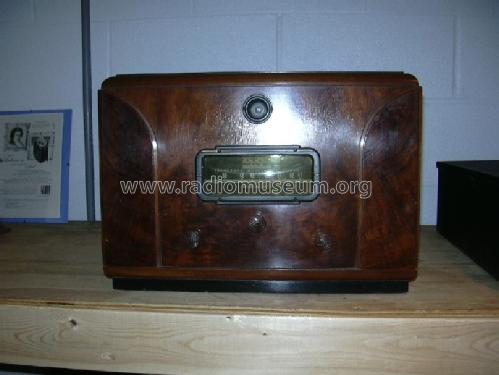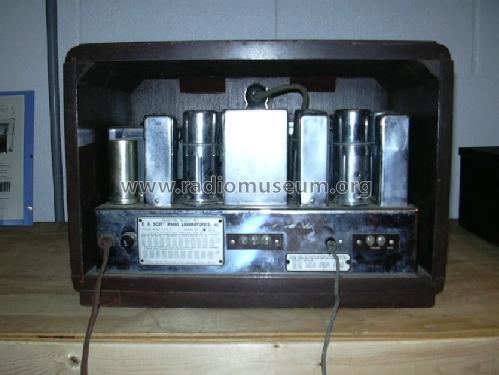FM Tuner Chrome CHASSIS
Scott Radio Labs.(E.H., Transformer); Chicago (IL)
- Produttore / Marca
- Scott Radio Labs.(E.H., Transformer); Chicago (IL)
- Anno
- 1940
- Categoria
- Adattatore (per OC/FM/VHF/UHF inclusi moduli incorporati), convertitore di frequenza
- Radiomuseum.org ID
- 55364
Clicca sulla miniatura dello schema per richiederlo come documento gratuito.
- Numero di tubi
- 10
- Principio generale
- Supereterodina (in generale)
- Gamme d'onda
- Solo modulazione di frequenza (FM)
- Tensioni di funzionamento
- Alimentazione a corrente alternata (CA) / 110 Volt
- Altoparlante
- - Per cuffie o amplificatori esterni
- Materiali
- Mobile di metallo, valvole visibili
- Radiomuseum.org
- Modello: FM Tuner Chrome CHASSIS - Scott Radio Labs.E.H.,
- Forma
- Chassis o in scatola da montaggio
- Annotazioni
- Old FM band 41-50 MHz.
Price with table cabinet 120 USD. Special cabinet Mod'e.
- Prezzo nel primo anno
- 110.00 $
- Fonte esterna dei dati
- Ernst Erb
- Fonte dei dati
- Guide to Old Radios
- Riferimenti schemi
- Rider's Perpetual, Volume 14 = 1944 = before 1943
- Bibliografia
- E.H.Scott Radio Collectors Guide (1925-1946) (.)
- Letteratura / Schemi (1)
- Scotts new Silver Ghosts
- Letteratura / Schemi (2)
- Pre-War Consoles
- Altri modelli
-
In questo link sono elencati 201 modelli, di cui 126 con immagini e 51 con schemi.
Elenco delle radio e altri apparecchi della Scott Radio Labs.(E.H., Transformer); Chicago (IL)
Discussioni nel forum su questo modello: Scott Radio Labs.E.H: FM Tuner Chrome CHASSIS
Argomenti: 1 | Articoli: 1
The Scott FM tuner starts with an 1853 high Gm tube as the RF amplifier. The output is transformer coupled to the mixer, a 6SA7 tube. The triode section of the 6SA7 is used as the local oscillator. A VR150 regulator stabilizes the oscillator plate supply, providing a stable IF output at 5.25 MHz. The IF amplification is passed through four stages. The first two stages are type 1232 high Gm tubes. The IF coupling is unique, using a combination of inductive tuning and capacitive coupling to minimize inductive coupling in the IF transformers. The third and fourth stages are generally referred to as the first and second limiters. This function is obtained from two 6J7 tubes, in a cascade limiter circuit. The grid-leak condenser combinations used in these stages determine the noise limiting time constants. The first limiter has a time constant of 2.5 microseconds. The second stage is at half that value. The discriminator/detector is a 6H6 dual diode. With a well balanced diode pair, the detector circuit should have a uniform response from 30 to 15000 cycles. The R/C circuit following the diode load is a correction for pre-emphasis of high audio frequencies imposed at the transmitter. Finally, a 6E5 tuning indicator is fed through a voltage divider/audio filter from the second limiter stage. The stand alone FM tuner unit has a 5Y3 rectifier for the power supply.
Kent King, 22.Aug.06



